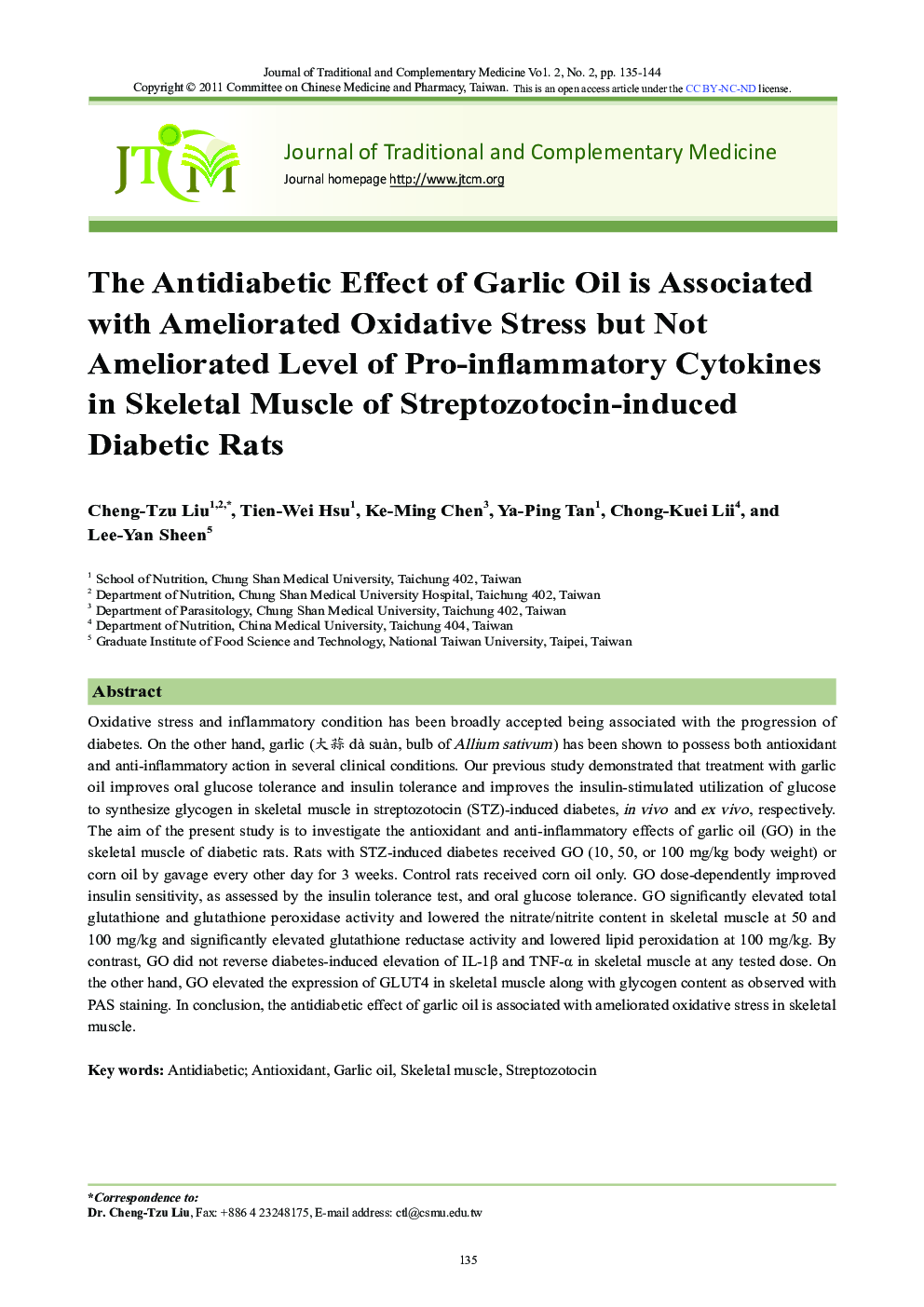| Article ID | Journal | Published Year | Pages | File Type |
|---|---|---|---|---|
| 3099905 | Journal of Traditional and Complementary Medicine | 2012 | 10 Pages |
Oxidative stress and inflammatory condition has been broadly accepted being associated with the progression of diabetes. On the other hand, garlic (大蒜 dà suàn, bulb of Allium sativum) has been shown to possess both antioxidant and anti-inflammatory action in several clinical conditions. Our previous study demonstrated that treatment with garlic oil improves oral glucose tolerance and insulin tolerance and improves the insulin-stimulated utilization of glucose to synthesize glycogen in skeletal muscle in streptozotocin (STZ)-induced diabetes, in vivo and ex vivo, respectively. The aim of the present study is to investigate the antioxidant and anti-inflammatory effects of garlic oil (GO) in the skeletal muscle of diabetic rats. Rats with STZ-induced diabetes received GO (10, 50, or 100 mg/kg body weight) or corn oil by gavage every other day for 3 weeks. Control rats received corn oil only. GO dose-dependently improved insulin sensitivity, as assessed by the insulin tolerance test, and oral glucose tolerance. GO significantly elevated total glutathione and glutathione peroxidase activity and lowered the nitrate/nitrite content in skeletal muscle at 50 and 100 mg/kg and significantly elevated glutathione reductase activity and lowered lipid peroxidation at 100 mg/kg. By contrast, GO did not reverse diabetes-induced elevation of IL-1β and TNF-α in skeletal muscle at any tested dose. On the other hand, GO elevated the expression of GLUT4 in skeletal muscle along with glycogen content as observed with PAS staining. In conclusion, the antidiabetic effect of garlic oil is associated with ameliorated oxidative stress in skeletal muscle.
